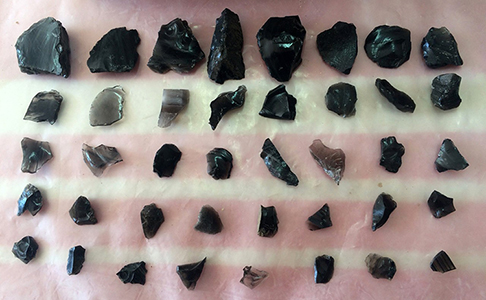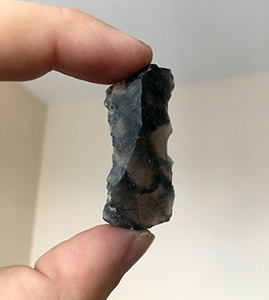Yale University Professor Ellery Frahm used a Vanta™ handheld XRF analyzer to test obsidian artifacts from two Early Bronze Age archaeological sites in Armenia. His goal was to figure out where people got their obsidian from to make the stone tools.
Obsidian was prized by ancient people for making stone tools. It’s easy to work and shape, and the edges people can produce on the tools are extremely sharp. Obsidian is created during volcanic eruptions. Although the stone is primarily made of silica, other elements are also present. The combination and ratio of these elements act almost like a fingerprint, and archaeologists can use this information to figure out where the obsidian used to make a tool came from. Obsidian tools are found all over the world, and knowing where the stone originated from provides important insight into ancient trade networks and economies.

An outcrop of obsidian. (Photo provided by Ellery Frahm, Yale University).
The first step to identifying where obsidian originated from is to collect samples from all of the known sources in the region. The material chemistry of each sample is analyzed to establish a baseline that the data from the obsidian artifacts can be compared to. Dr. Frahm used 30 geological obsidian specimens from Armenia and Georgia to establish a baseline. Dr. Frahm then tested the obsidian artifacts and compared the results to the baseline. He was able to establish the source for all of the artifacts tested with a high degree of confidence.
 Obsidian stone tools and tool-making debris. (Photo provided by Ellery Frahm, Yale University). |  An obsidian stone tool. (Photo provided by Ellery Frahm, Yale University). |
Related Content
Portable GPS-XRF Protocols for Field Archaeology
Portable XRF Technology for Archaeometry
Understanding X-Ray Fluorescence

